How the architecture of the Cotswolds came to define the archetypal English country village
The architecture of the Cotswolds is almost intrinsically linked to popular conceptions of the English country village. Clive Aslet considers the people and places that contributed to bringing that about.
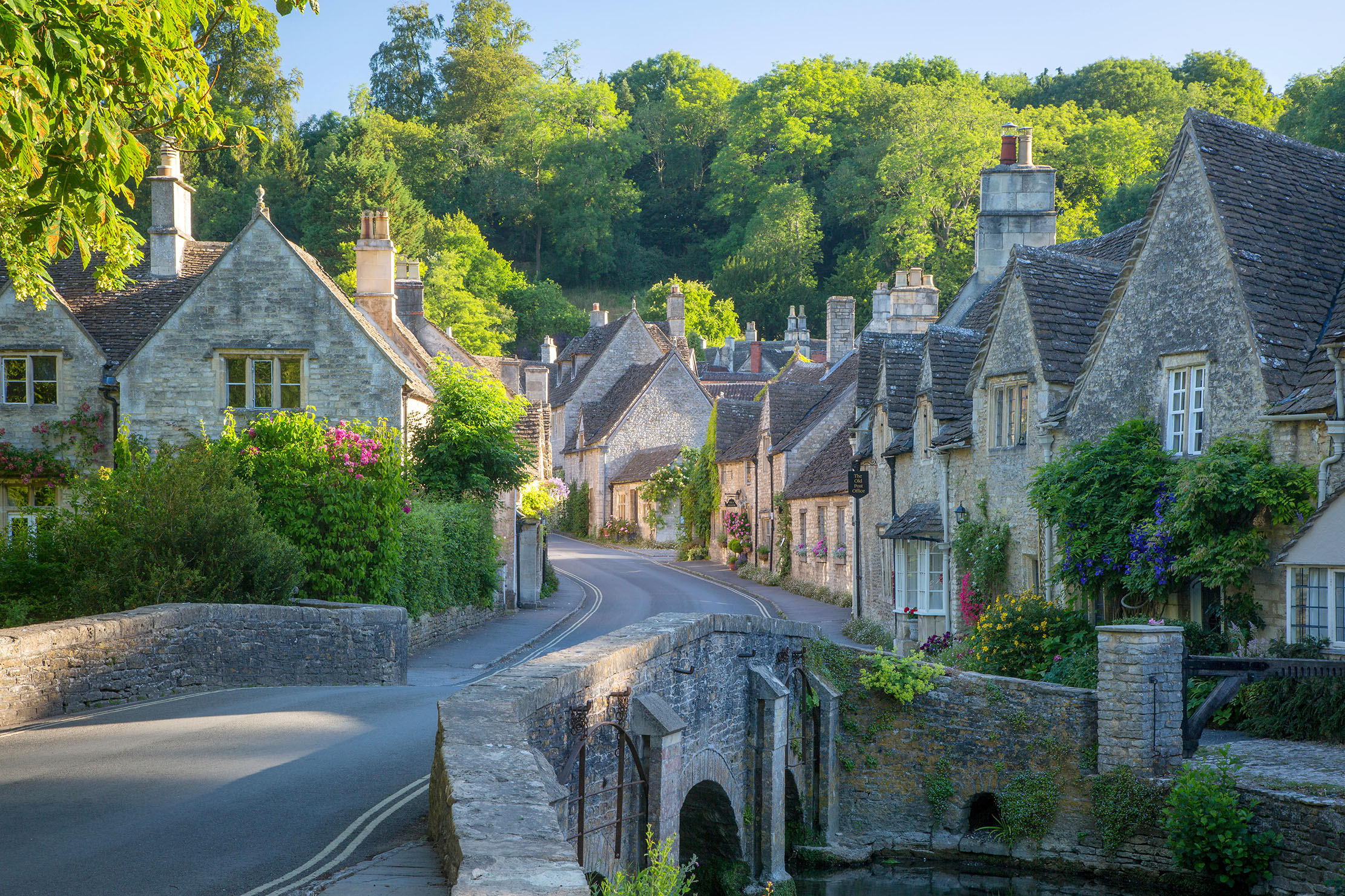
In High Victorian England, Warwickshire had possession of the national soul. This was the county of Shakespeare and the architecture of Merry England was Jacobethan, gabled and framed from the mighty Midland oaks that both symbolised and derived from the country’s heartlands. By the First World War, however, the geography of Englishness had changed and the honeyed stone and sleepy villages of the Cotswolds had captured the public imagination.
It’s a change documented in the popular A Cotswold Village of 1898, written by the young cricketer J. Arthur Gibbs. He described the Arcadia to which he had moved with his bride — a land of trout streams, dry-stone walls and old-fashioned houses — as the Merry Cotswolds.
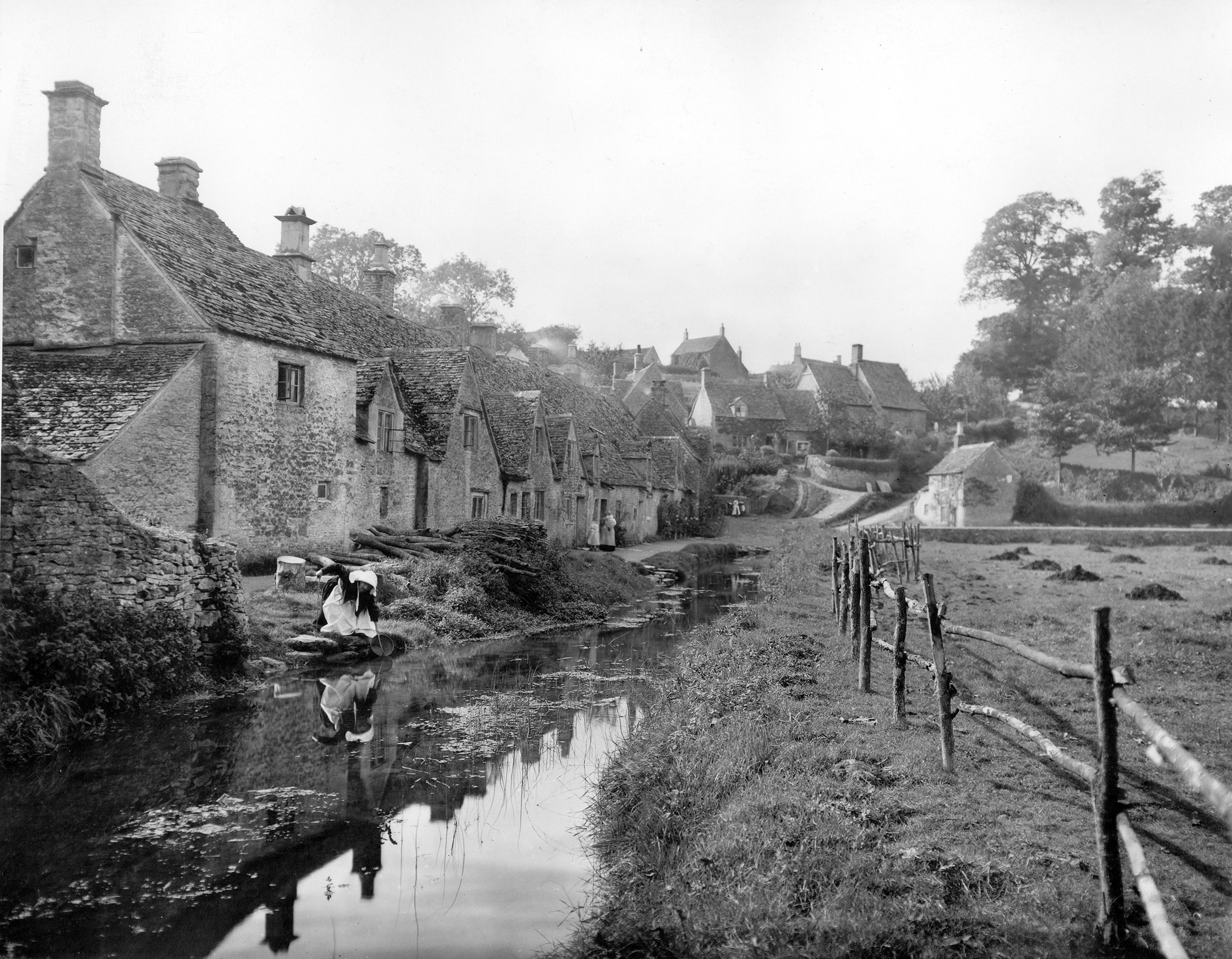
Shakespearean associations also had a place in this construct. Not only must the Bard have passed through the area on his frequent journeys between London and Stratford-upon-Avon, but he perhaps first coined its name in the person of ‘Will Squele a Cotsole man’ in Henry IV Part II.
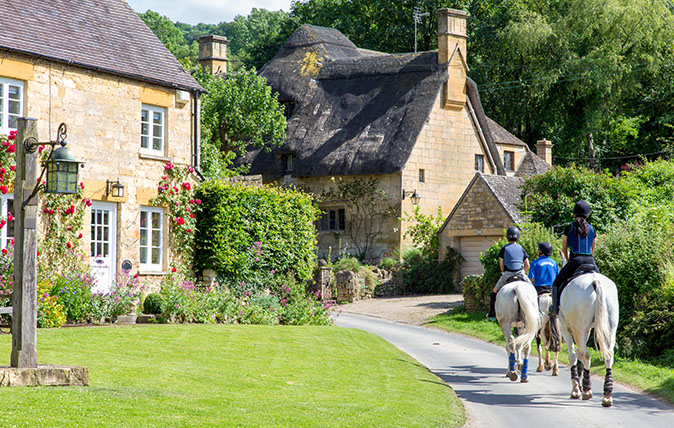
Before 1800, the Cotswolds had been a place of industry: the Golden Valley outside Stroud could equally have derived its name from the fortunes of the clothiers who had their mills there as from the autumn colour of the trees. It’s no coincidence that the famously picturesque Arlington Row, romantically photographed by Country Life in 1912 and now owned by the National Trust, was really a run of industrial dwellings: an old woolshed had been converted for the use of weavers in the 17th century. Textiles moved north, nearer the coal that powered the mills: the Bliss Tweed Mill near Chipping Norton, with its columnar chimney, is a rare survival.
Burford, similarly, had bustled during the coaching era, but coaching inns such as Ramping Cat and the Bull were diminished or closed when the railways came. Agriculture remained old-fashioned, if not Biblical, and was badly affected by the long agricultural depression that started in the 1870s. The local dialect was so thick that, in the 1890s, Gibbs had to publish a glossary to explain George Ridler’s Oven, one of the folk songs he collected. In the late 19th century, the Cotswolds assumed a Sleeping Beauty charm, akin to that of Burne-Jones’s Legend of the Briar Rose at Buscot Park in the Thames Valley.
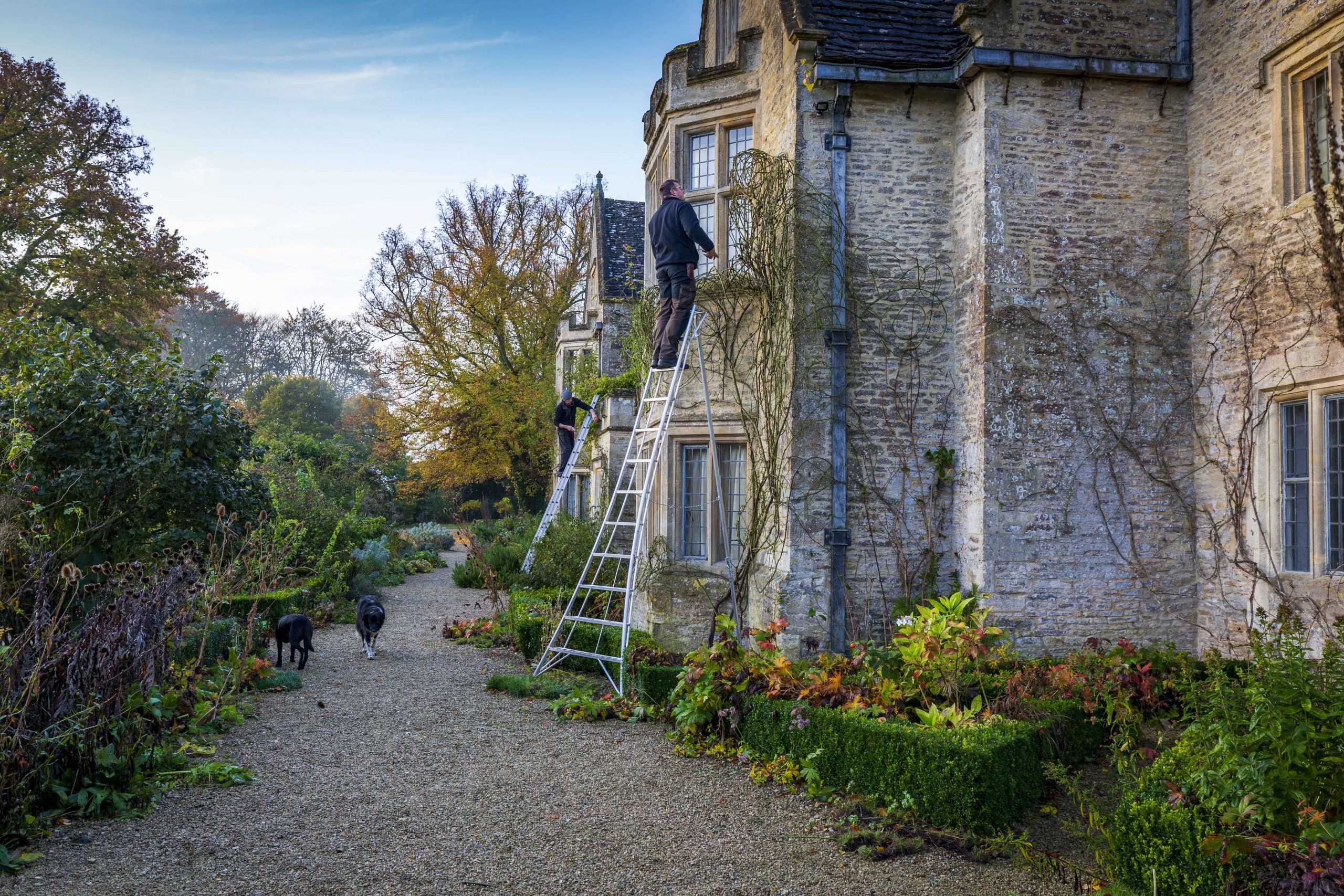
It was the Arts-and-Crafts Movement that kissed the Cotswolds awake. Luminaries within the movement could hardly have been ignorant of its architecture, as the designer and campaigner William Morris wrote lyrically about Kelmscott Manor, which he discovered in 1871, as a place ‘almost too beautiful to work in’. It was G. E. Street’s aggressive restoration of nearby Burford church that inspired Morris to found the Society for the Protection of Ancient Buildings (SPAB) in 1877, to defend the work of the anonymous craftsmen of the Middle Ages.
In terms of architecture, if not living standards, however, it was crucially important to figures such as Morris that the Cotswolds was not only harmonious, but democratic: ‘No rare marvel of art,’ he said in a lecture about a farmhouse at Broadway, ‘…no palace either, not even a manor house, but a yeoman’s steading at the grandest, or even his shepherd’s cottage…’tis in fact beautiful, a work of art and a piece of nature, no less.’ Travel by rail and bicycle opened up the delights of this artisan beauty to a wide audience.
Sign up for the Country Life Newsletter
Exquisite houses, the beauty of Nature, and how to get the most from your life, straight to your inbox.
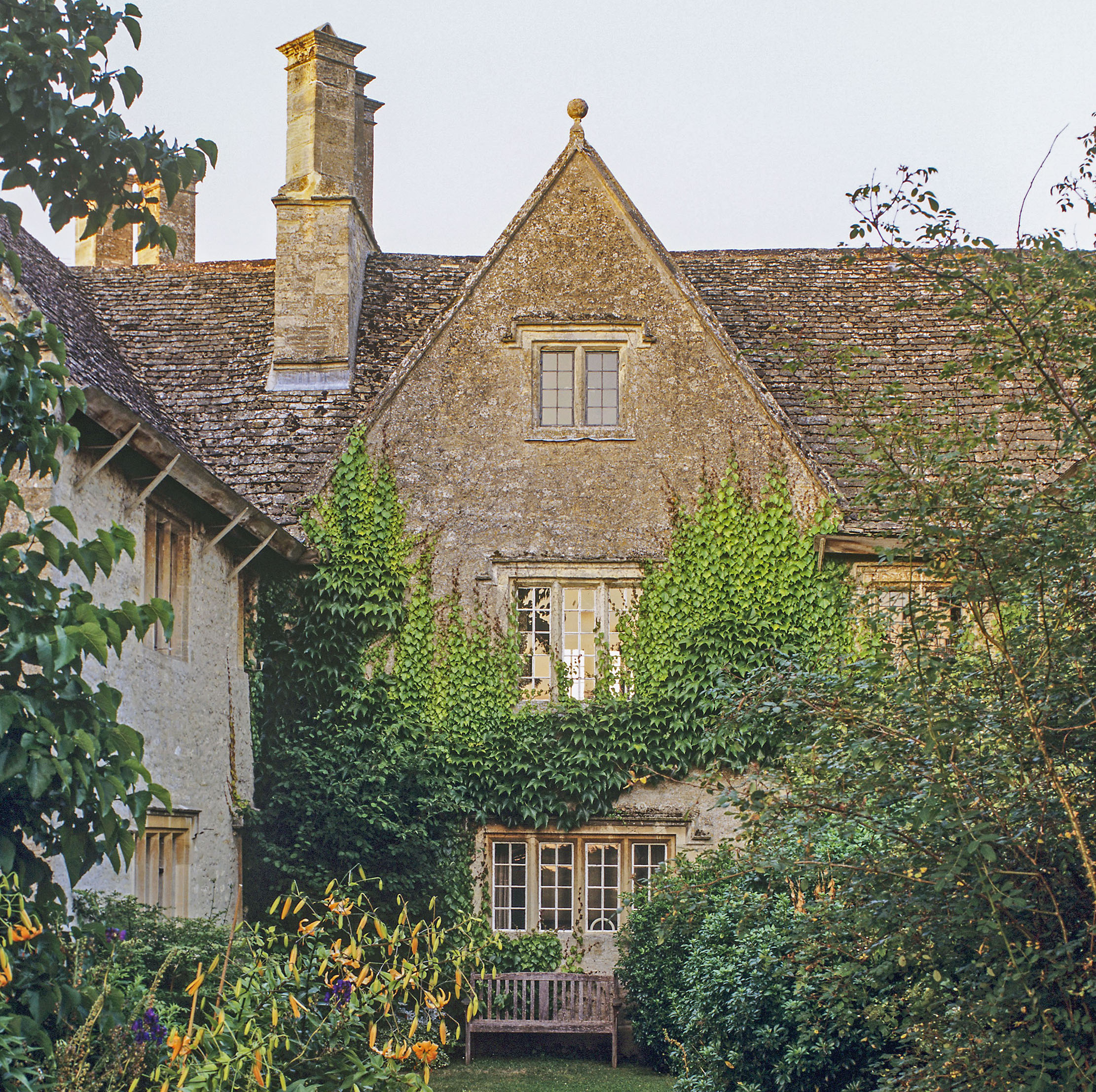
In the 1880s, a band of largely American painters and illustrators, many of whom worked for Harper’s Magazine in New York, adopted Broadway as their summer base. They included the dapper Edwin Abbey, who specialised in historical scenes from the Renaissance and 18th century, and the Englishman Alfred Parsons, an illustrator and garden designer. They set up studios and work rooms in Abbot’s Grange, which, at that point, was no longer in domestic use (it had even served as a workhouse and a prison).
John Singer Sargent came, giving Japanese lanterns to two little girls in white dresses whom he painted in the dusk of the garden as Carnation, Lily, Lily, Rose. There was much boisterousness between the artists, who painted within shouting distance of each other — fun condoned, if not embraced, by Henry James, who is supposed to have been horrified by the American actress Mary Anderson’s decision to turn the dilapidated Court Farm into a home for herself and her husband, the New York-born sportsman and barrister Antonio de Navarro. ‘You, if I may say so, have made yourselves martyrs to the antique, the picturesque,’ the author wailed.
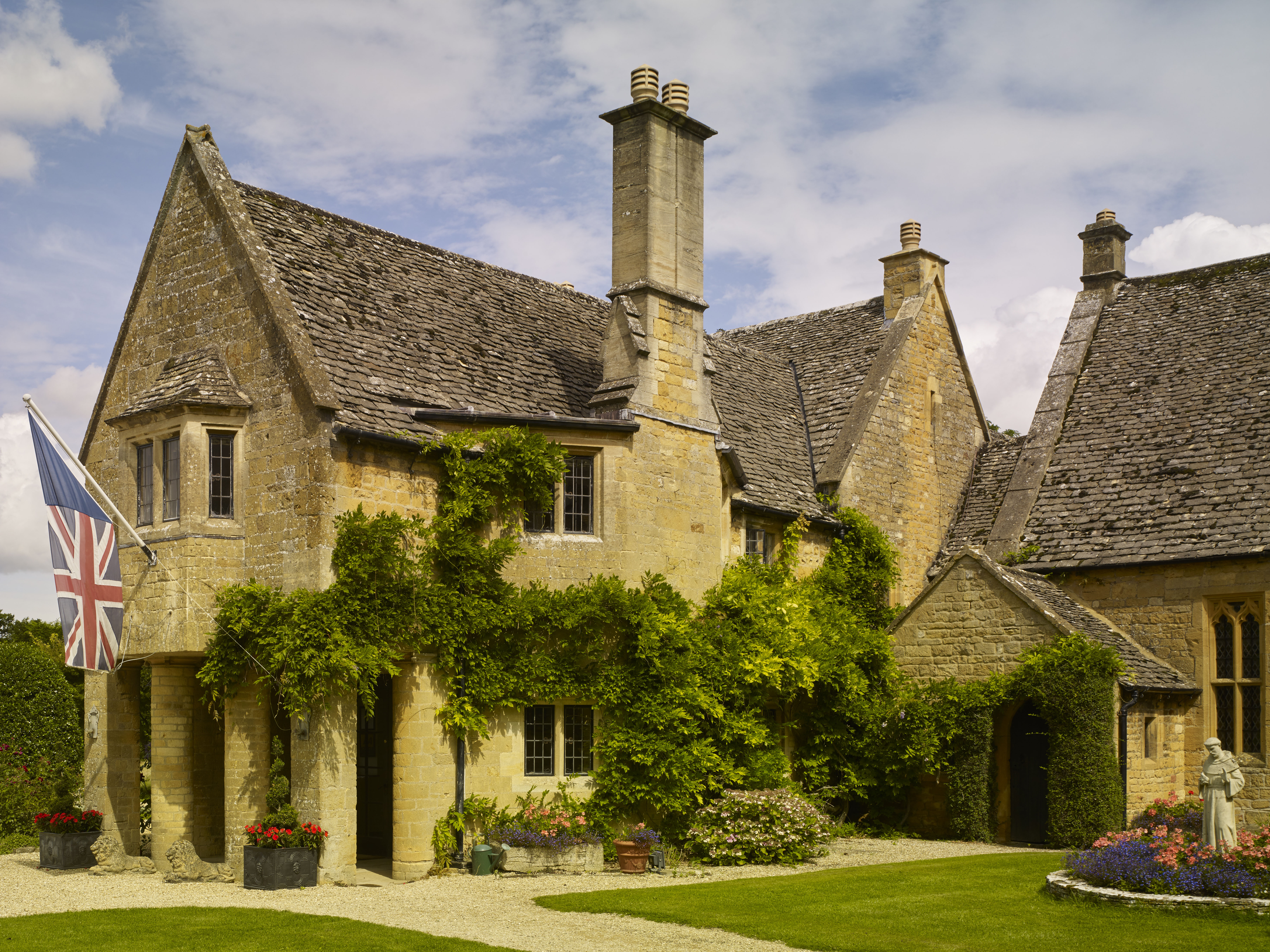
It was not until 1903 that Broadway got a railway station. In that year, Sydney Bolton Russell bought the inn on the main street, The Lygon Arms, restoring it with the help of the architect C. E. Bateman. He then decorated it as a country house, with antique furniture restored by his son Gordon. Originally a craftsman in the Arts-and-Crafts mould (although he was later frowned-upon by purists for his willingness to increase output by using machines), Gordon Russell opened a workshop in the village.
For the Russells, the timing could not have been better. The Cotswolds, not sufficiently dramatic or highly coloured for Victorian taste, were about to become a destination for motorists and charabancs.
In 1905, Edward VII showed the way: having spent Saturday night at Batsford Park with Lord Redesdale (and Mrs Keppel), he devoted Sunday afternoon in a motor tour of the North Cotswolds — Chipping Campden, Broadway, Bourton-on-the Hill. He had tea with Lord and Lady Elcho at Stanway. These were also the years when the Arts-and-Crafts Movement, which wanted nothing to do with royal house parties, adopted the Cotswolds as the prime place to settle when fleeing London.
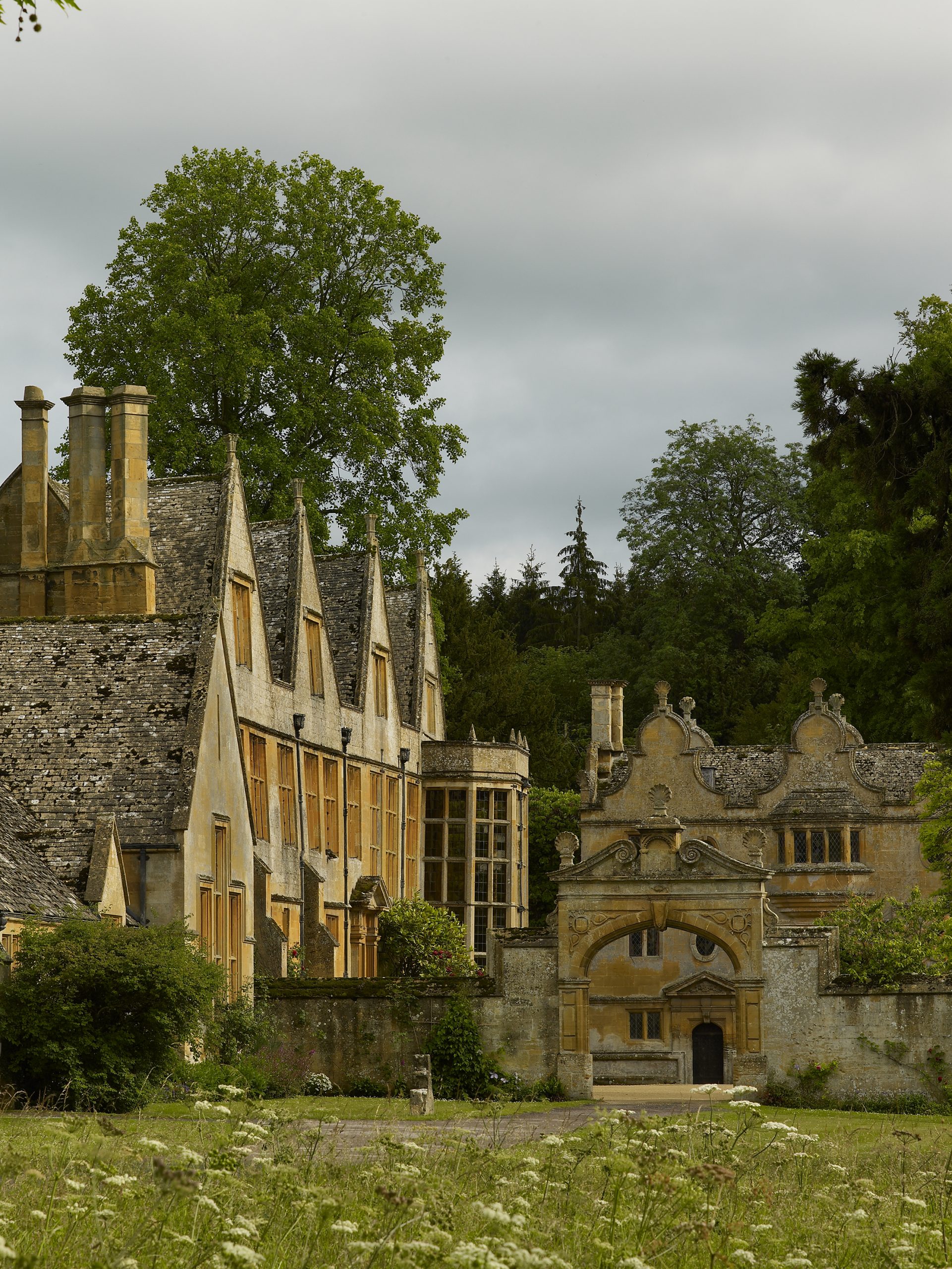
Ernest Gimson and Sidney Barnsley, both enthusiastic members of the SPAB, arrived in 1893, soon being joined by Sidney’s brother Ernest. They first took a lease on Pinbury Park from Lord Bathurst. Typically, this 17th-century gentry house, where the avenue was said to be haunted by the ghost of a nun-housekeeper rolling a Double Gloucester cheese, had fallen down the social scale, becoming an out-of-repair farmhouse. The trio restored it so successfully that Lord Bathurst, recently married, decided to take it back as a home for himself and his new bride.
However, he gave Gimson and the Barnsleys generous terms for the lease and the choice of sites on his estate to build houses, which he funded himself. They relocated to the hamlet of Sapperton, a mile away, which became a nucleus for the artists and craftsmen — such as Alfred and Louise Powell and Norman Jewson — whose work can be seen, alongside that of Gimson and Sidney Barnsley, at Rodmarton Manor for the Biddulphs.
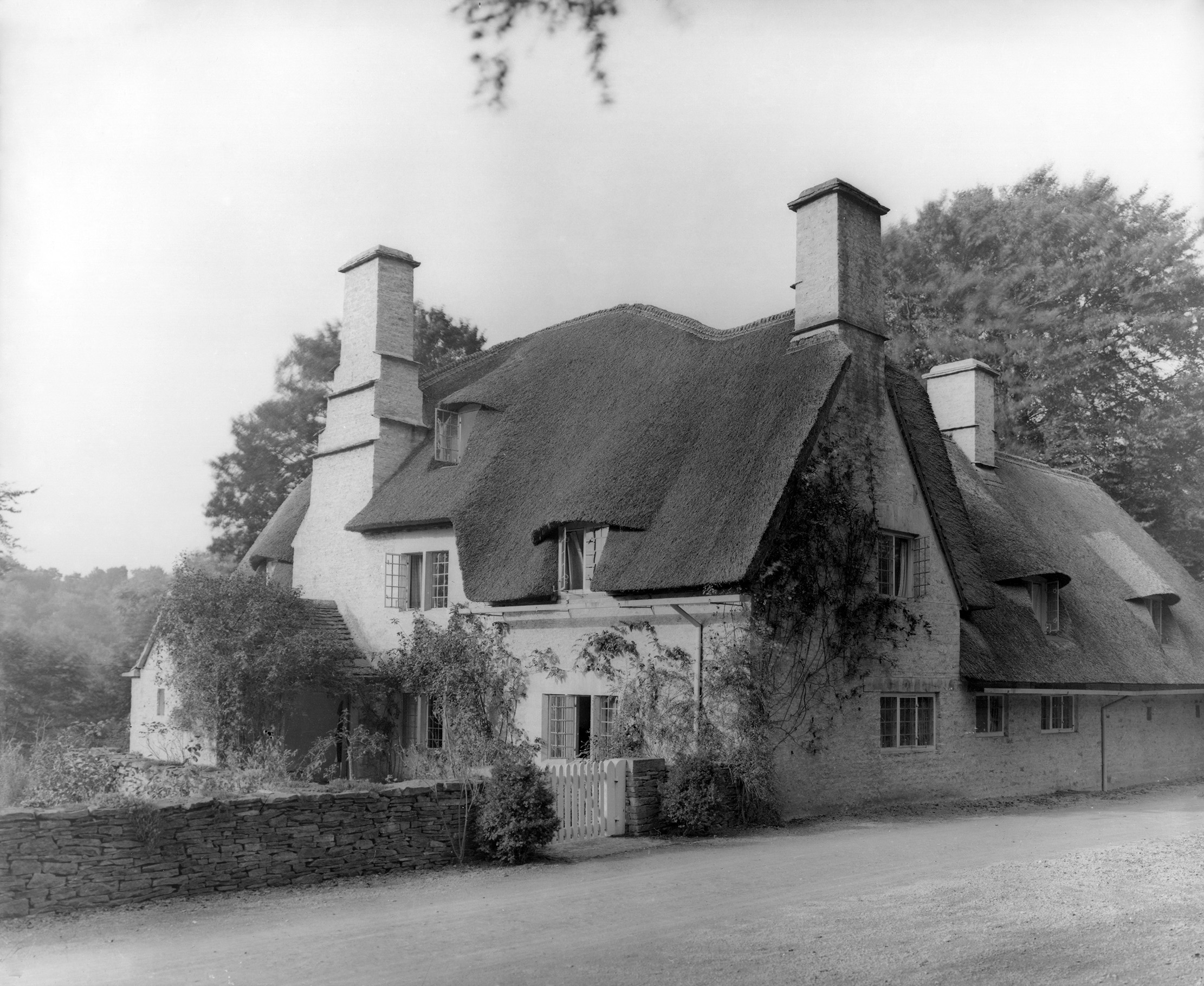
Rodmarton was designed by Ernest Barnsley and built so authentically, according to old traditions, that it took two decades to complete. All the materials that went into it were found or made on the estate, everything was done by hand and as much as possible — furniture, carpets, curtains and fittings — by ordinary estate workers, because their lives should be enriched by creative work, too.
In 1902, C. R. Ashbee, architect, craftsman and social reformer, was the pied piper who led 50 or so Guild of Handicraft craftsmen from the soot-blackened, slum-ridden, noisy, hectic and overcrowded capital to the Arcadian surroundings of Chipping Campden.
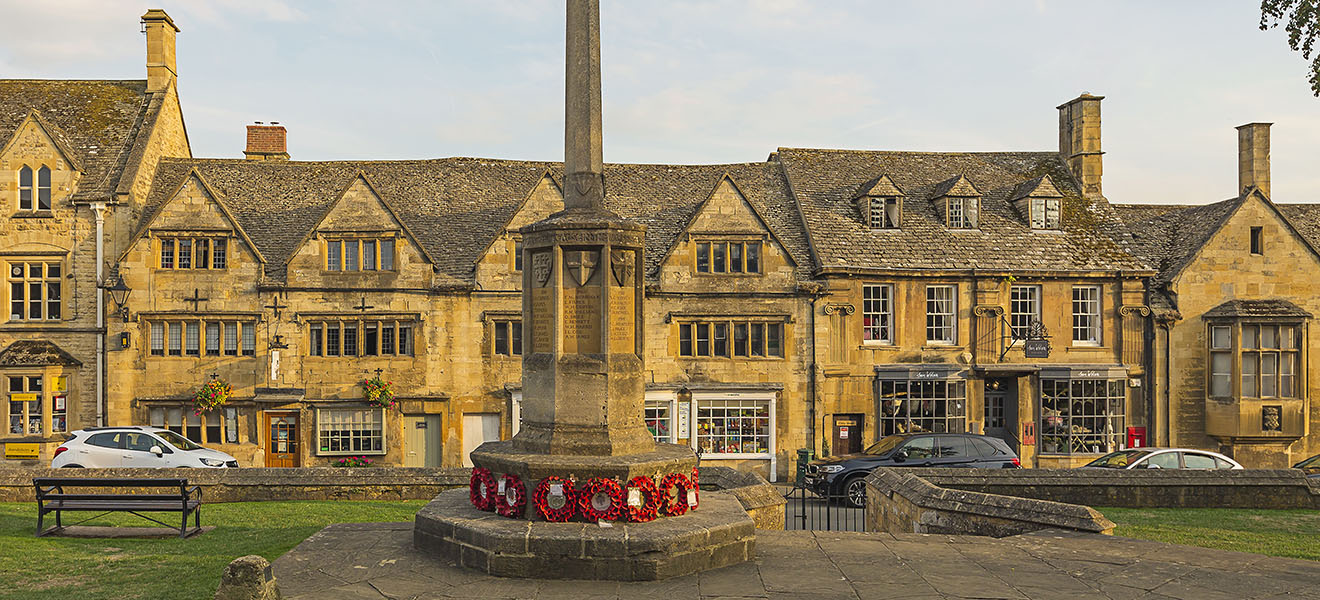
Previously located in Whitechapel, the members astonished the local population, some of whom still wore corduroys and smocks. Swedish exercises and swimming expeditions, amateur dramatics and marching bands were new to them — as was the sight, one Sunday, of the artist Walter Crane, accompanied by a party of Guildsmen, bicycling past a congregation of black-clad townspeople as they left church, at which moment he was brought to a halt by a puncture.
Before long, artist F. L. Griggs had arrived, attracted both by the experiment in the Simple Life and the architecture of the town. Alas, the Guild of Handicraft went into liquidation in 1907, although some of the craftsmen stayed on. Griggs, whose finances were also parlous, remained, too. His love of the town saved it from the unsightly fate that befell other places in the course of the 20th century. Many of those who moved to the area were struck by its social needs. When the Socialist founder of Countryman magazine, J. W. Robertson Scott, purchased Idbury Manor near Stow-on-the-Wold in 1923, he found the cottages decayed and the village children thin and bandy-legged. People were drifting to the town — hence the campaign, started before the First World War, to build village halls in the locality.
Like other Arts-and-Crafts figures, Griggs was haunted by a profound sense of loss, combined with an intense feeling for England. ‘Could Eden have been lovelier than we know England once was?’ he wrote in a letter. The rhapsodic beauty of Detmar Blow’s country houses, which often refashion or extend existing houses, are an attempt to re-create this lost paradise. He became practically the house architect for The Souls group, a prominent member of which was Mary Elcho, one of the Wyndham sisters; she was also a friend of the Ashbees at Campden.
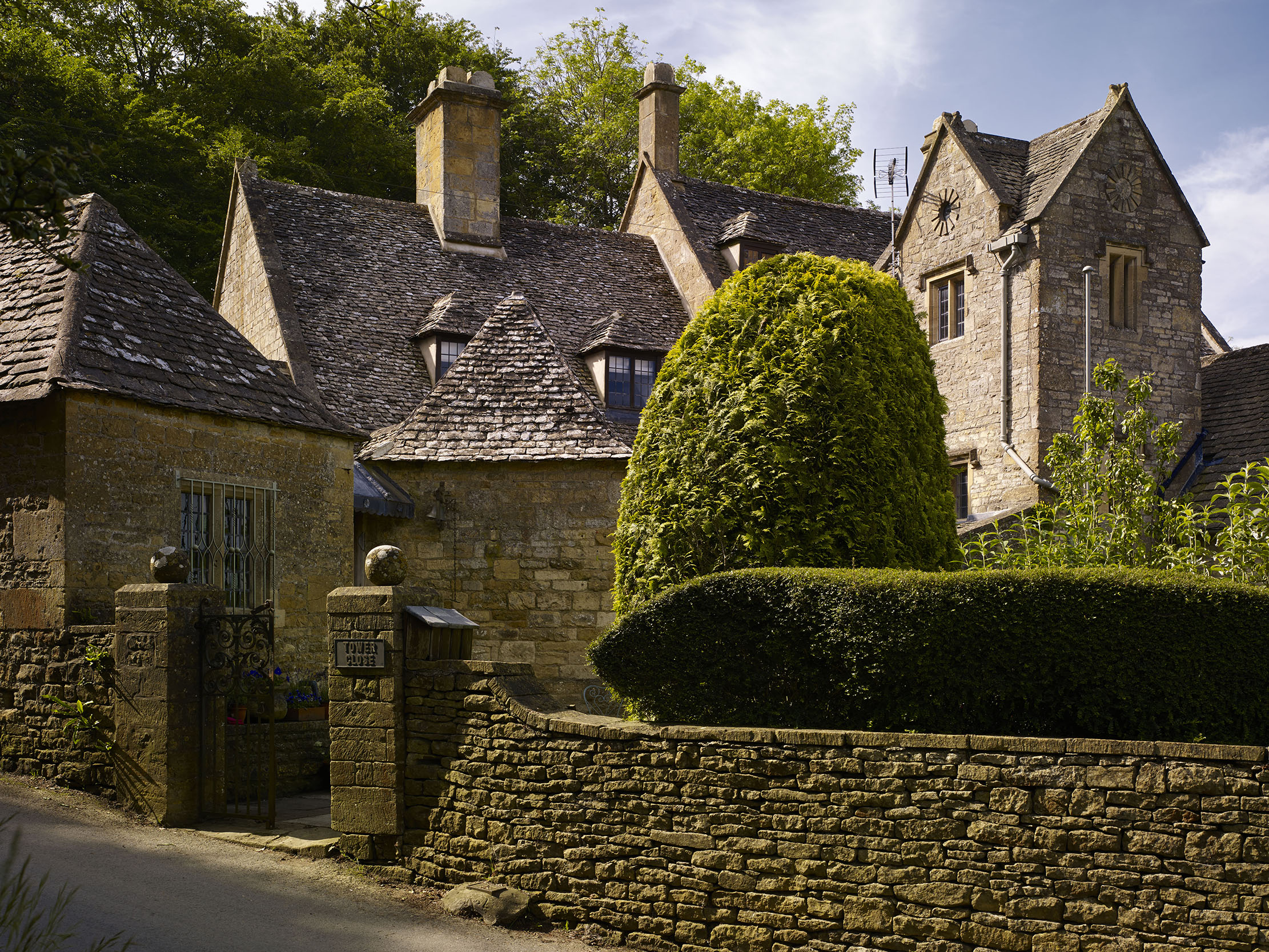
For the Elchos at Stanway, Blow added a new wing, which was demolished in 1948. ‘It would be difficult in England to find any landscape more attractive than this surrounding Stanway,’ wrote Country Life, describing Stanway Manor in 1916. Blow built his own Eden at Hilles, on a marvellous site looking towards the Severn Estuary, outside Stroud.
It was not the farouche and glamorous Blow who did most to cement the Cotswolds as an image of Englishness, however, but an altogether less charismatic figure. Looking like a bemused country solicitor in his portrait by Sir Gerald Kelly, Guy Dawber came to Moreton-in-Marsh to act as clerk of works for Ernest George and Harold Peto, then building Batsford Park; he had been suffering from eye strain in their office in London.
When Batsford was finished, Dawber did not leave the area. Instead, he set up on his own, opening an office in a little room he rented in the village institute at Bourton-on-the-Hill for 9d a week. A skilful watercolourist, he used his brush to work up an intimate know-ledge of Cotswold architecture. His client at Batsford, Lord Redesdale, was a champion, active in singing Dawber’s praises to potential country-house builders, and the work soon flowed in, seen, for example, at Eyford House, Upper Slaughter — voted England’s Favourite House by Country Life in 2011.
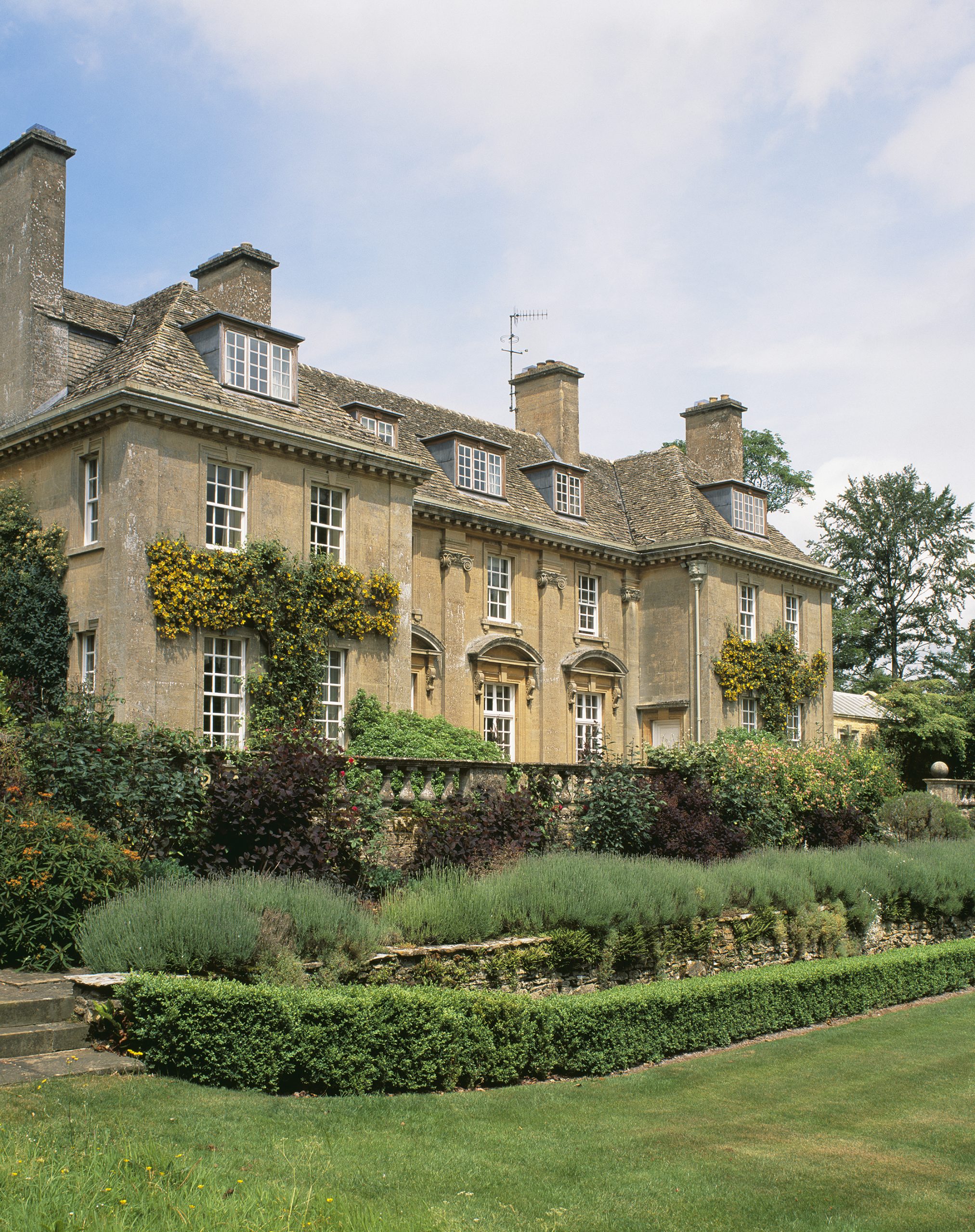
As Charles Reilly reflects in his chapter on Dawber in Representative British Architects of the Present Day, 1931: ‘Here was a man who could be trusted to build in any village or any park without spoiling the surroundings. Indeed, in a year or two his work would be hardly distinguishable from the old, yet it would always be original, practical, and useful.’ This, he concluded patronisingly, was a sound basis for practice.
It was also a sound basis for saving the Cotswolds, where so many of the buildings have been sympathetically patched up by architects such as Dawber. Cumulatively, this care has improved the Cotswolds in its own image and made it seem more architecturally coherent than it ever was historically. In 1926, Dawber was also one of the prime movers in setting up the Council for the Protection of Rural England and became its first president the following year. Not only the Cotswolds were saved.
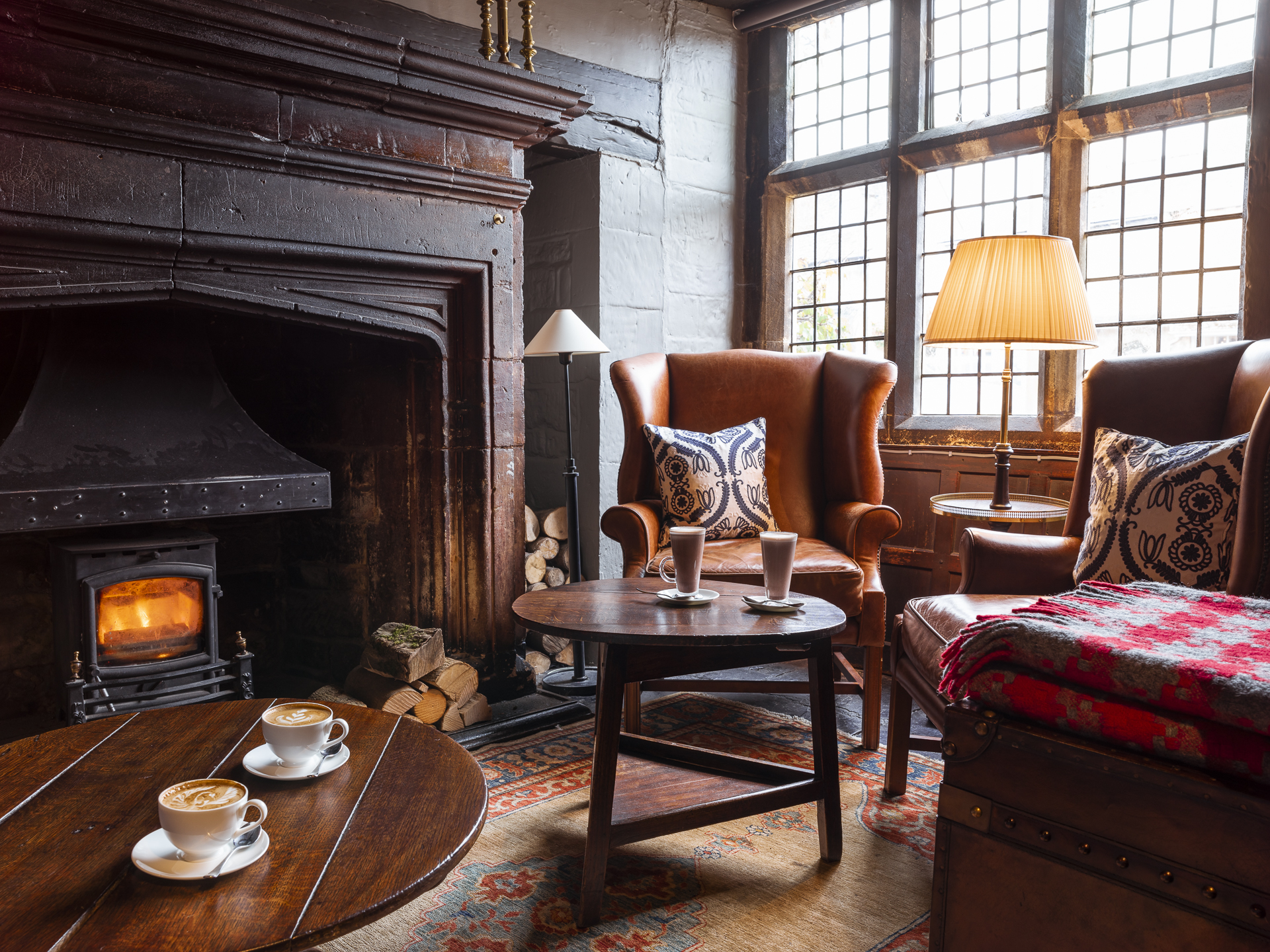
Credit: Lygon Arms
Lygon Arms, Broadway: A Cotswolds inn with history notched in its ancient wooden beams and hand-hewn stonework
In the heart of picture-perfect Broadway, gateway to the Cotswolds, the Lygon Arms has been a favourite getaway for centuries.

Credit: Supplied by The Good Hotel Guide - fine for re-use
10 of the best hotels in Britain to have earned themselves a spot in the latest Good Hotel Guide
Which are the best hotels to come on to the radar in the last 12 months? We asked the editors

From abbot to artist: The remarkable journey of Abbots Grange, Worcestershire
A house built for the Abbot of Pershore in the 14th century was restored as a studio by an American
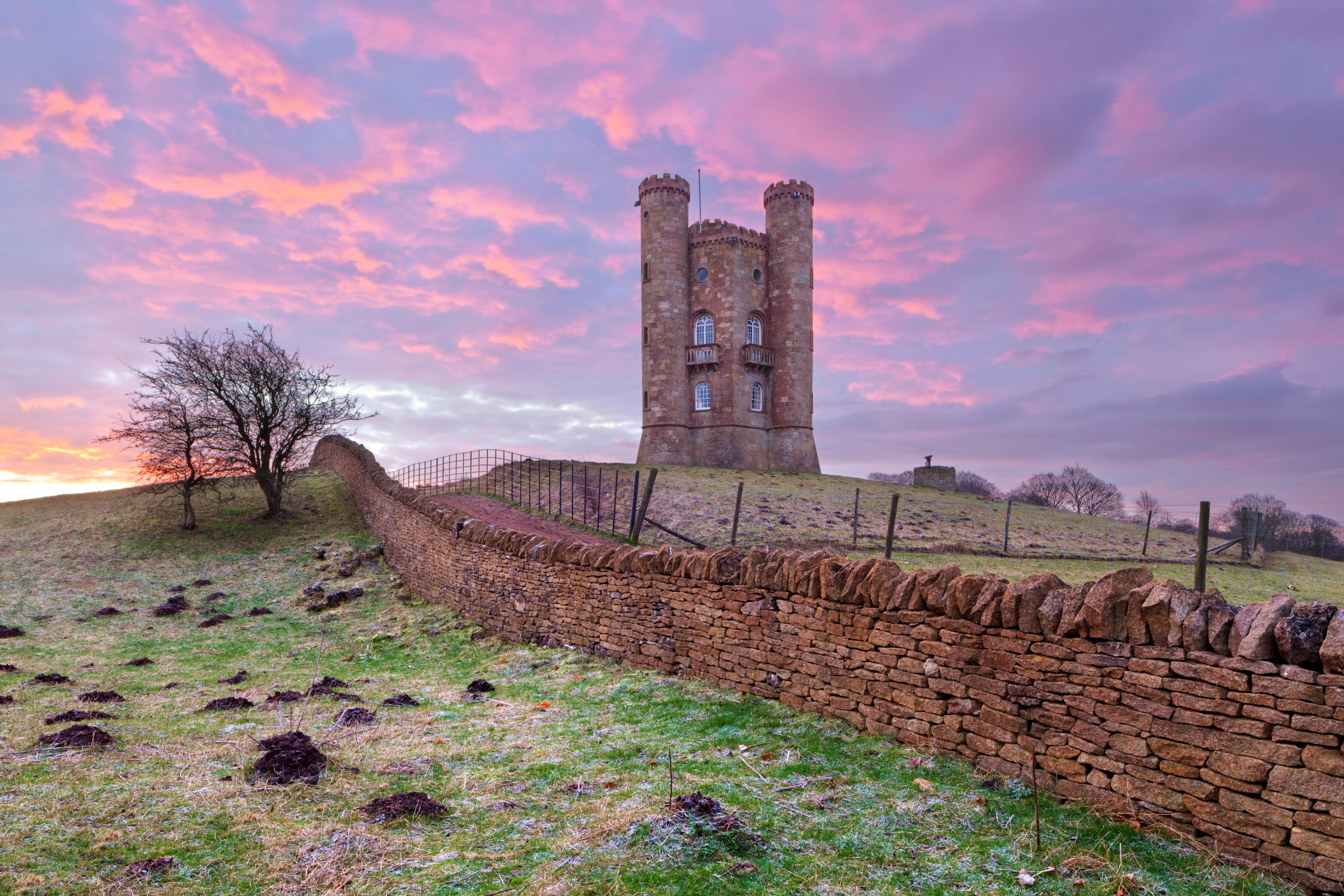
A driving tour of the Cotswolds: Chickens, sheep, and dry-stone walls as long as the Great Wall of China
Freda Lewis-Stempel takes to the road to explore one of the most alluring and ancient attributes of the Cotswolds: its
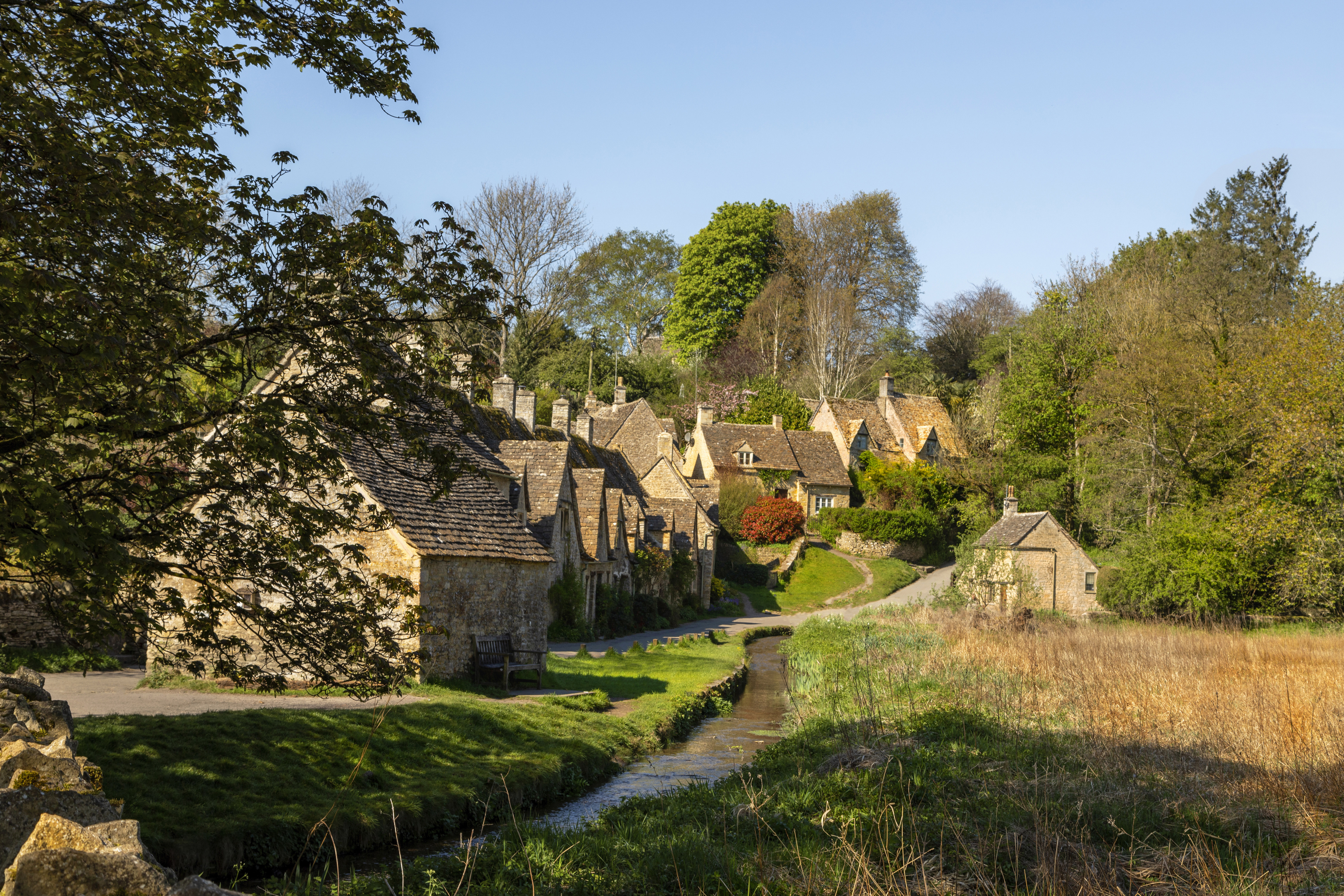
The Country Life guide to the Cotswolds: Where to go, what to see, where to stay and what to eat
Straddling five counties, the Cotswolds is arguably England's most famous region outside of London. Here’s our guide to what to
-
 Jungle temples, pet snakes and the most expensive car in the world: Country Life Quiz of the Day, April 14, 2025
Jungle temples, pet snakes and the most expensive car in the world: Country Life Quiz of the Day, April 14, 2025Mondays's quiz tests your knowledge on English kings, astronomy and fashion.
By James Fisher
-
 Welcome to the modern party barn, where disco balls are 'non-negotiable'
Welcome to the modern party barn, where disco balls are 'non-negotiable'A party barn is the ultimate good-time utopia, devoid of the toil of a home gym or the practicalities of a home office. Modern efforts are a world away from the draughty, hay-bales-and-a-hi-fi set-up of yesteryear.
By Annabel Dixon
-
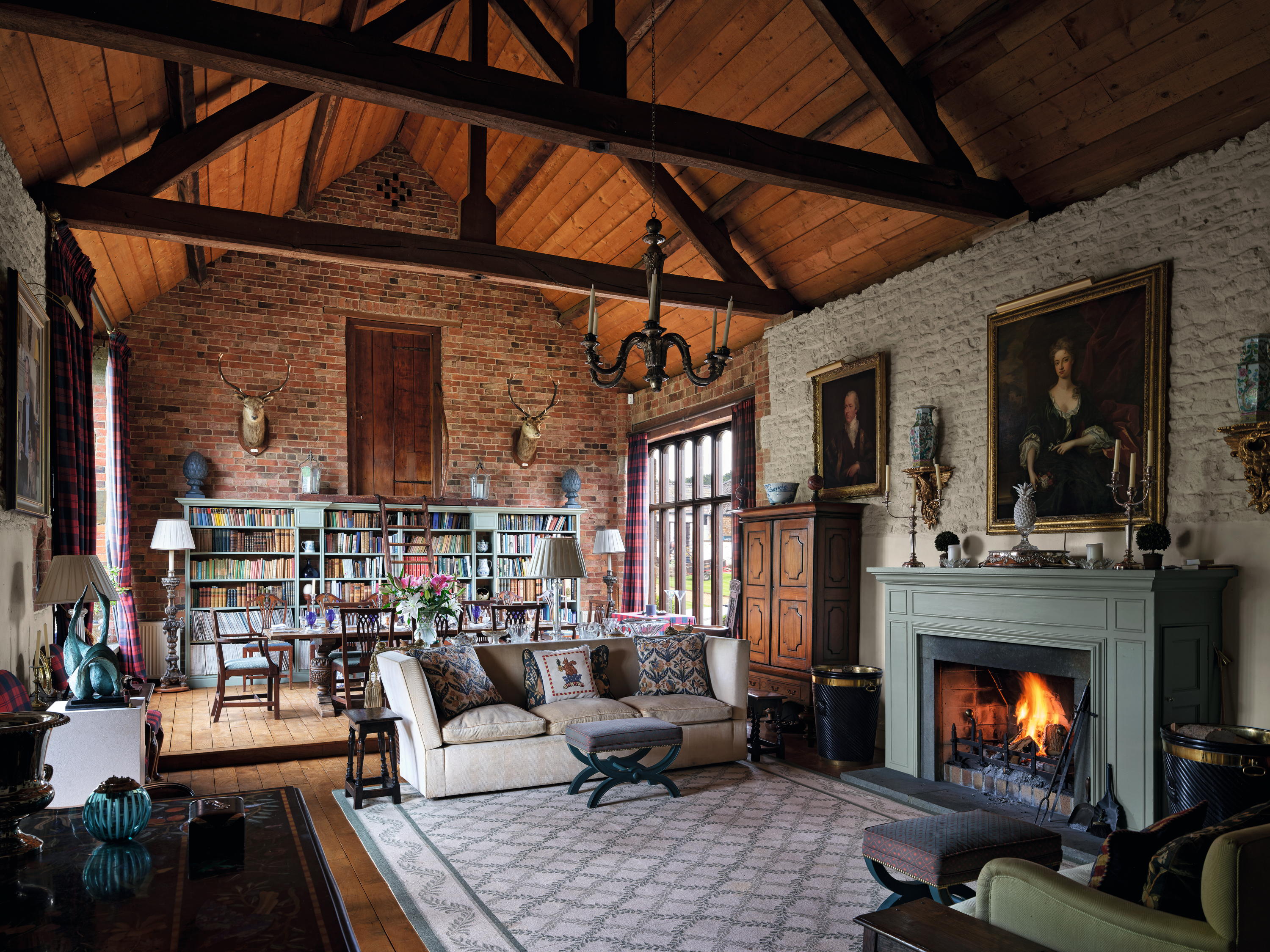 High Wardington House: A warm, characterful home that shows just what can be achieved with thought, invention and humour
High Wardington House: A warm, characterful home that shows just what can be achieved with thought, invention and humourAt High Wardington House in Oxfordshire — the home of Mr and Mrs Norman Hudson — a pre-eminent country house adviser has created a home from a 300-year-old farmhouse and farmyard. Jeremy Musson explains; photography by Will Pryce for Country Life.
By Jeremy Musson
-
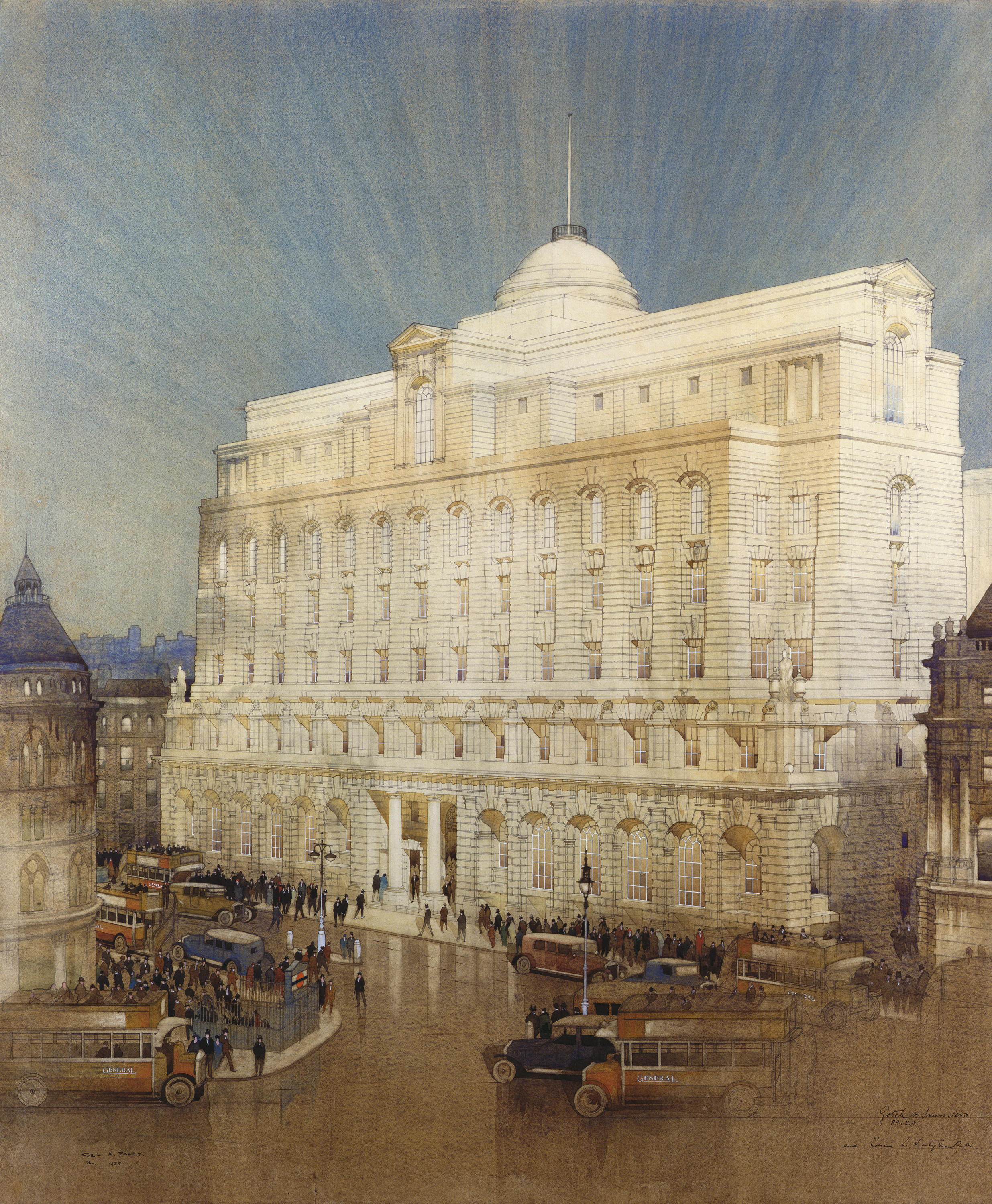 Sir Edwin Lutyens and the architecture of the biggest bank in the world
Sir Edwin Lutyens and the architecture of the biggest bank in the worldSir Edwin Lutyens became the de facto architect of one of Britain's biggest financial institutions, Midland Bank — then the biggest bank in the world, and now part of the HSBC. Clive Aslet looks at how it came about through his connection with Reginald McKenna.
By Clive Aslet
-
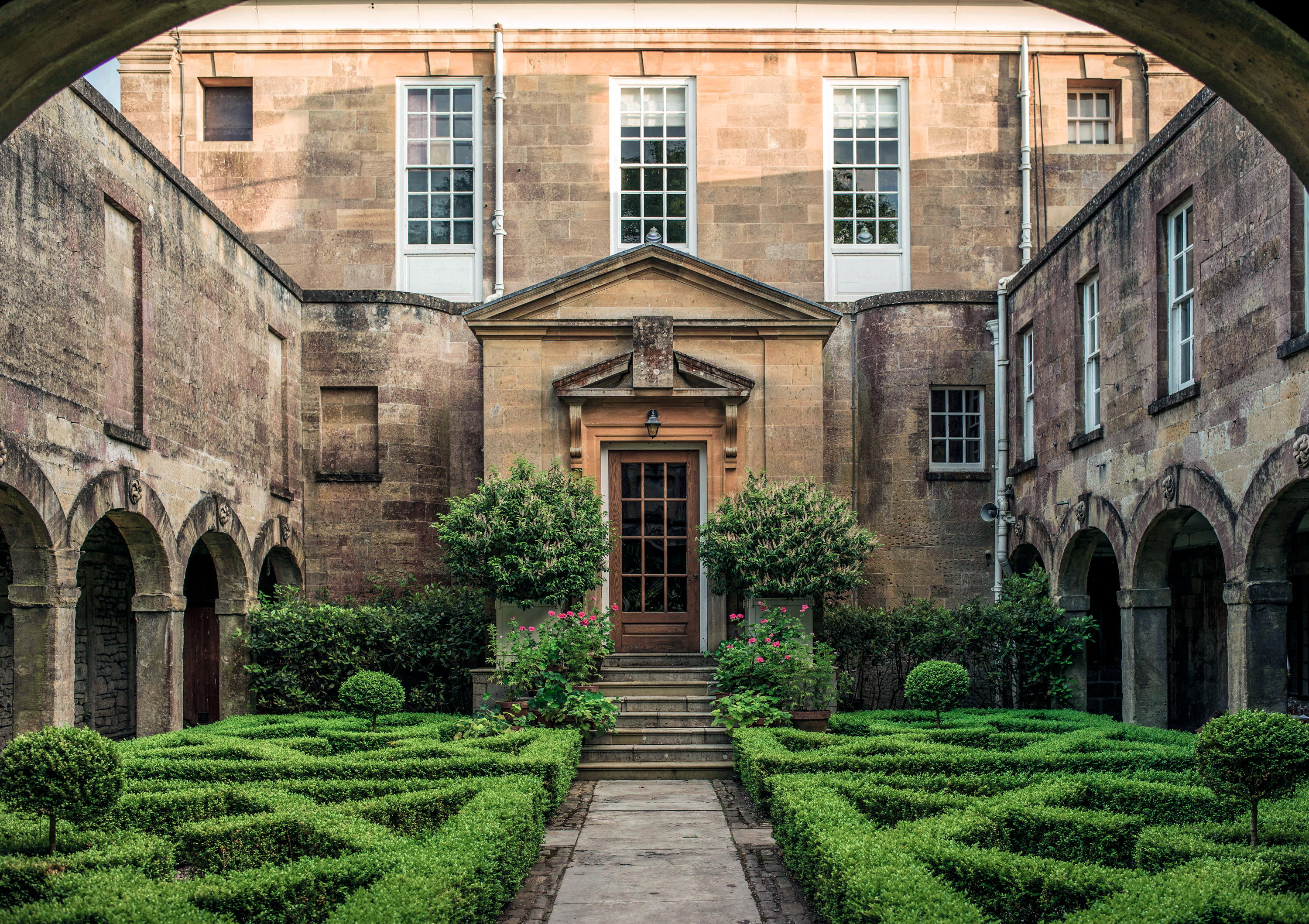 'There are architects and architects, but only one ARCHITECT': Sir Edwin Lutyens and the wartime Chancellor who helped launch his stellar career
'There are architects and architects, but only one ARCHITECT': Sir Edwin Lutyens and the wartime Chancellor who helped launch his stellar careerClive Aslet explores the relationship between Sir Edwin Lutyens and perhaps his most important private client, the politician and financier Reginald McKenna.
By Clive Aslet
-
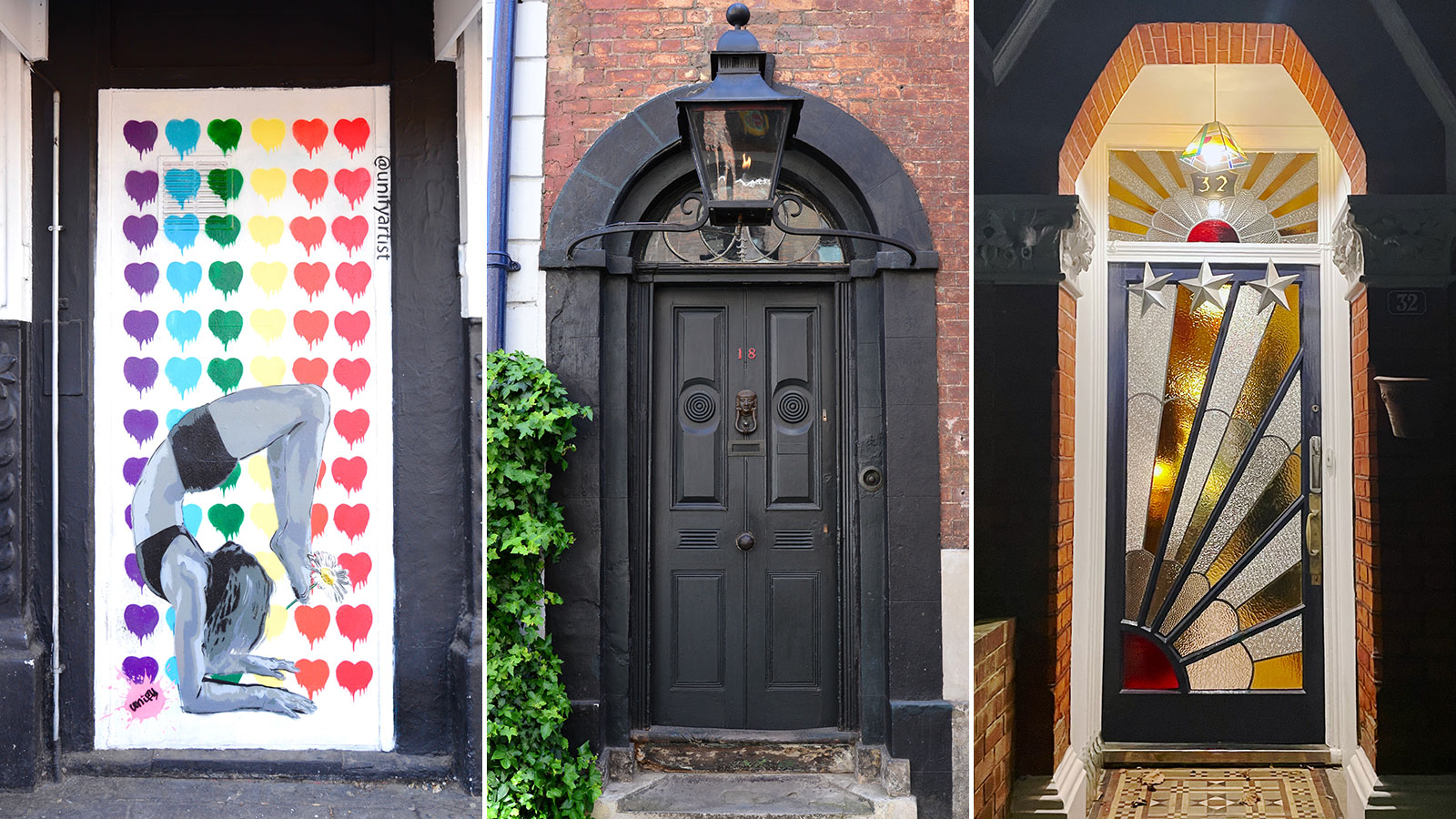 Cath Harries — The photographer on a 15-year quest to find the most incredible doors in London
Cath Harries — The photographer on a 15-year quest to find the most incredible doors in LondonBy Toby Keel
-
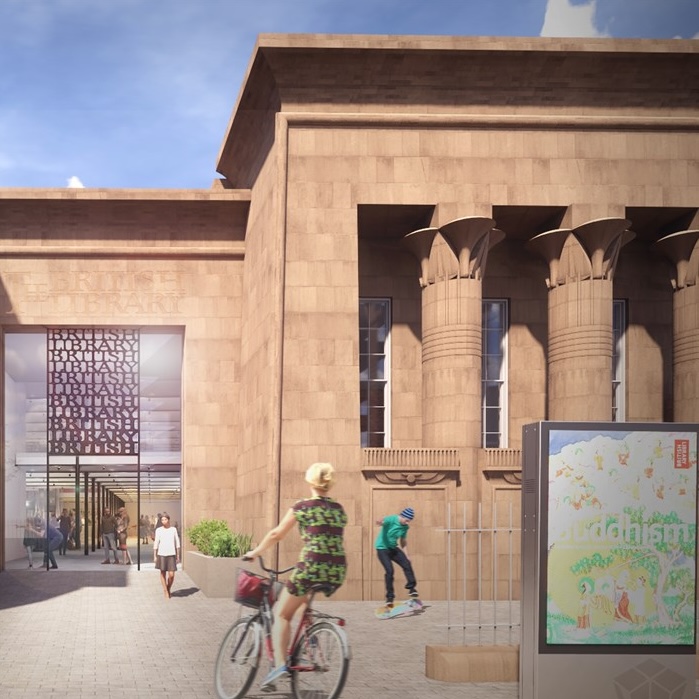 The extraordinary Egyptian-style Leeds landmark hoping to become a second British Library — and they used to let sheep graze on the roof
The extraordinary Egyptian-style Leeds landmark hoping to become a second British Library — and they used to let sheep graze on the roofThe project has been awarded £10million from the Government, but will cost £70million in total.
By Annunciata Elwes
-
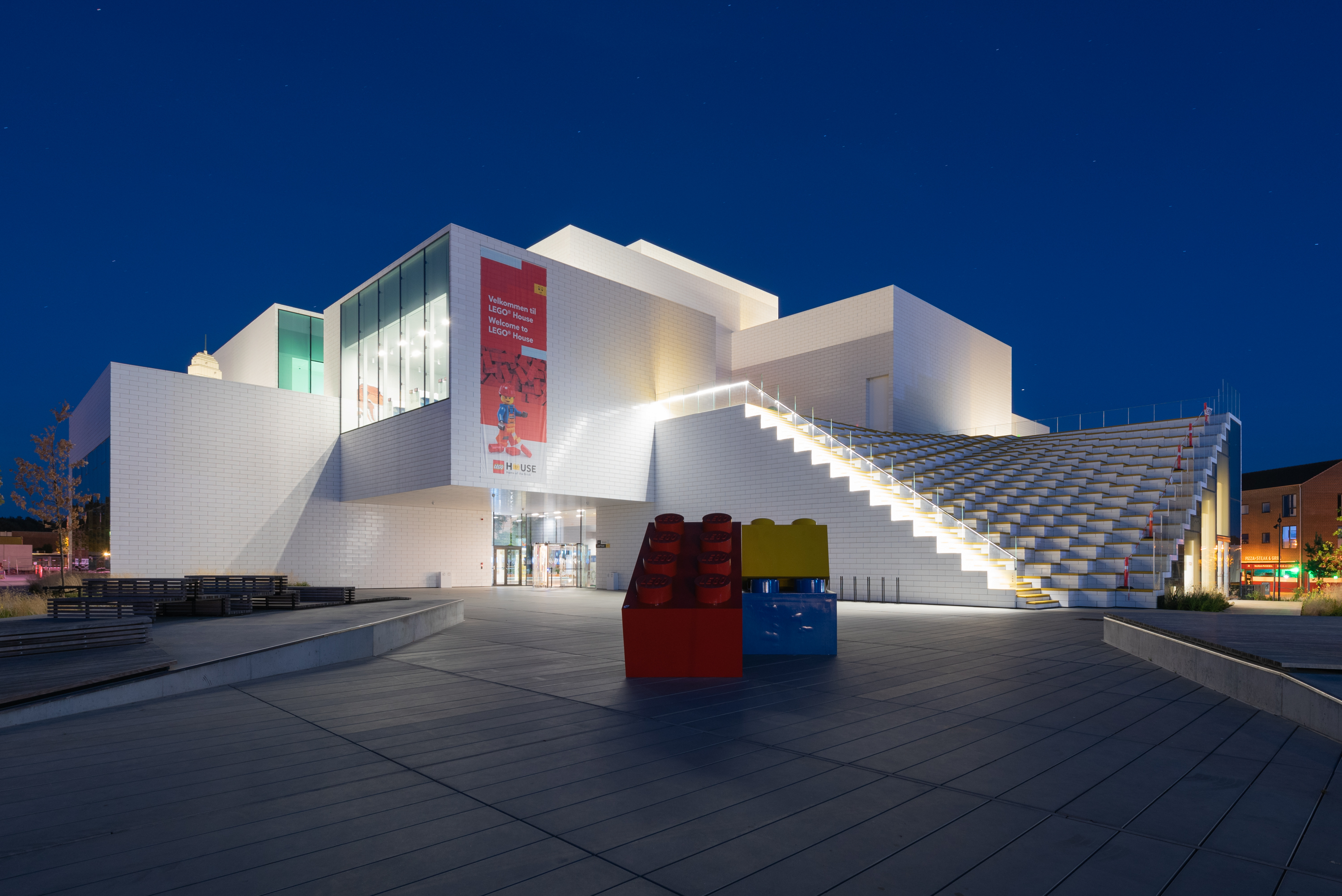 Art, architecture and plastic bricks at Lego House: 'It's as if the National Gallery set up easels and paints next to the masterpieces and invited you try your hand at creating a Van Gogh'
Art, architecture and plastic bricks at Lego House: 'It's as if the National Gallery set up easels and paints next to the masterpieces and invited you try your hand at creating a Van Gogh'The rural Danish town where Lego was created is dominated by the iconic toy — and at Lego House, it has a fittingly joyful site of pilgrimage. Toby Keel paid a visit.
By Toby Keel
-
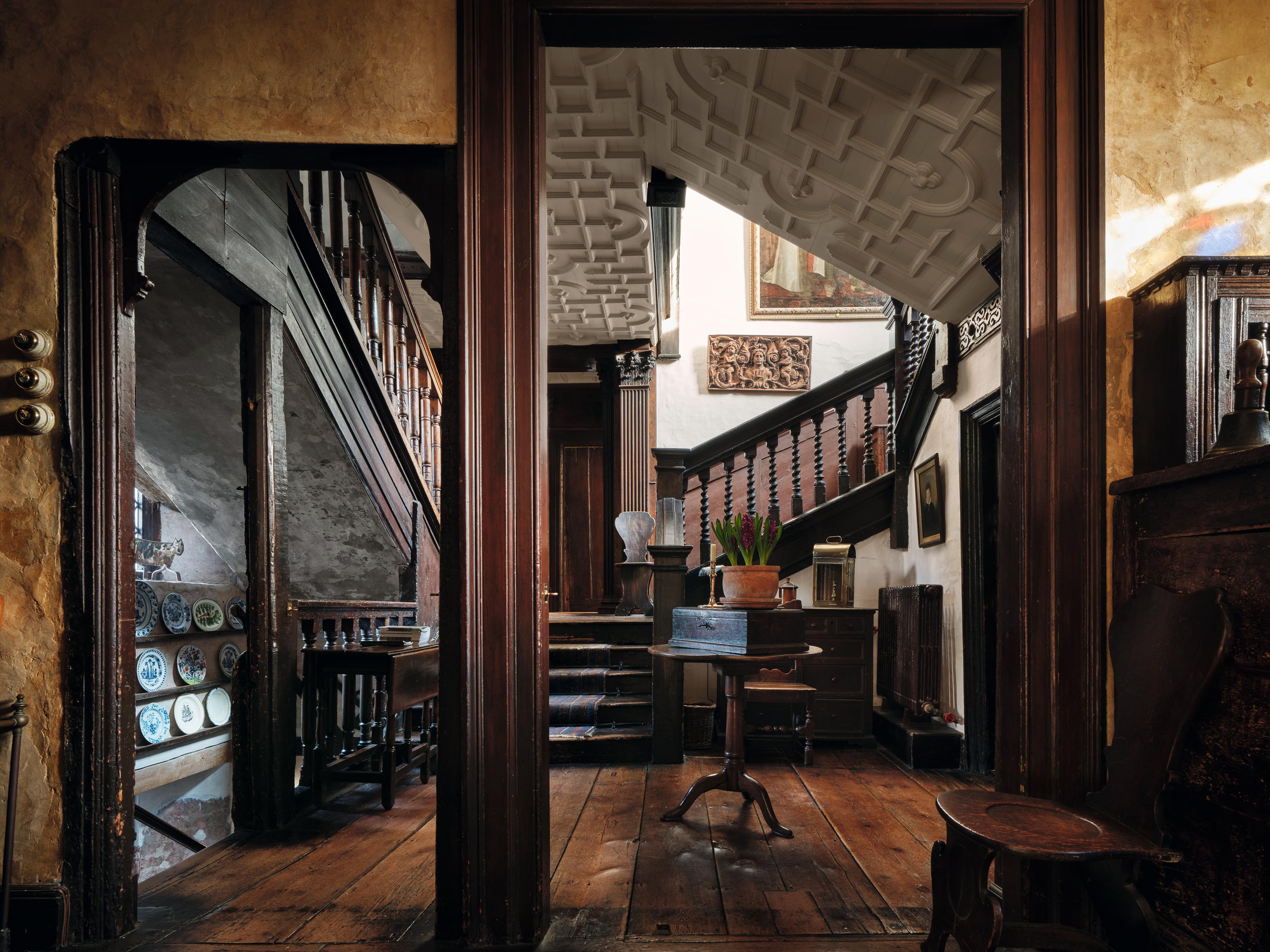 Restoration House: The house in the heart of historic Rochester that housed Charles II and inspired Charles Dickens
Restoration House: The house in the heart of historic Rochester that housed Charles II and inspired Charles DickensJohn Goodall looks at Restoration House in Rochester, Kent — home of Robert Tucker and Jonathan Wilmot — and tells the tale of its remarkable salvation.
By John Goodall
-
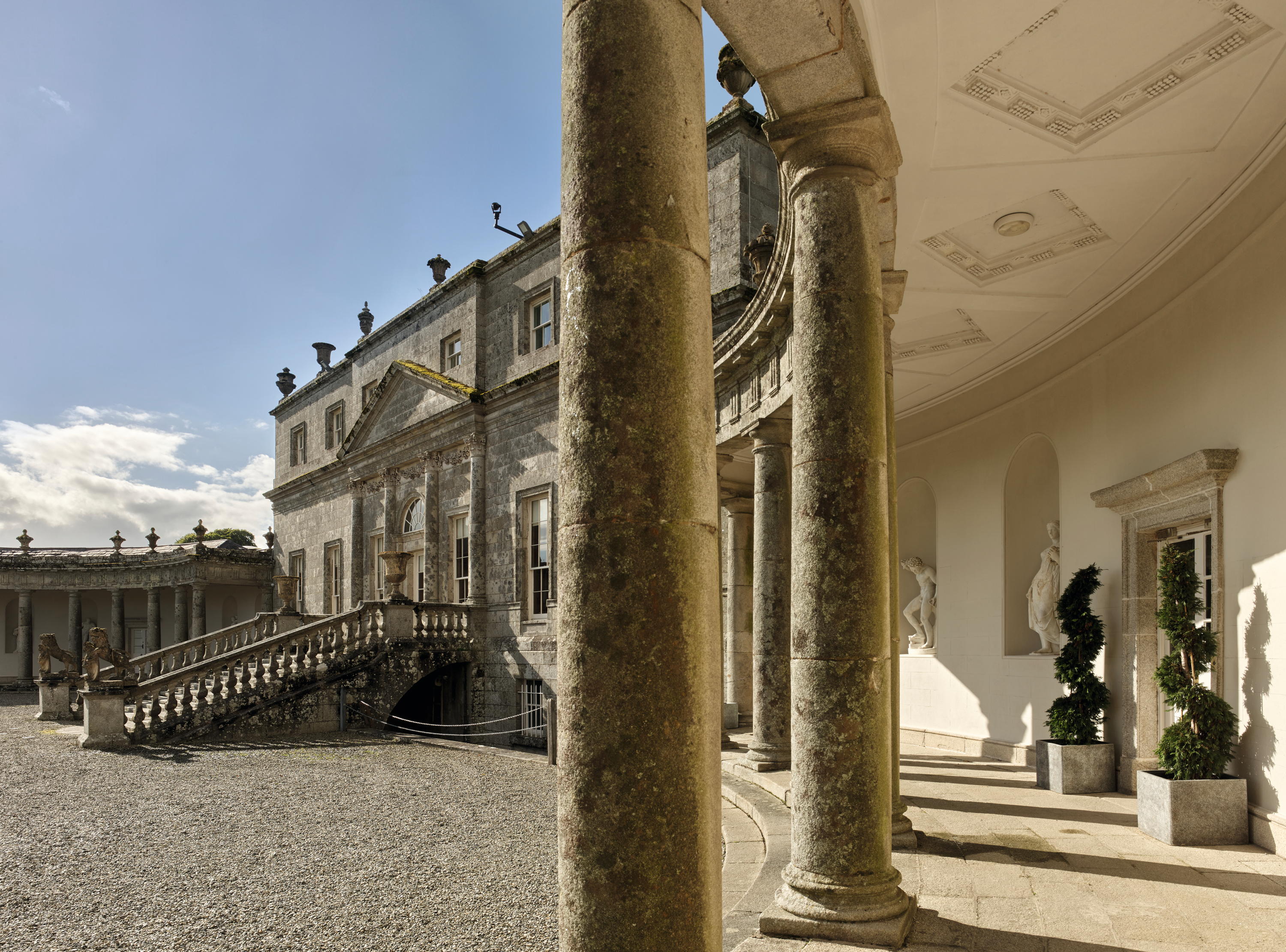 'A glimpse of the sublime': Inside the drawing room of the 'grandest Palladian house in Ireland'
'A glimpse of the sublime': Inside the drawing room of the 'grandest Palladian house in Ireland'The redecoration of the drawing room at Russborough House in Co Wicklow, Ireland, offers a fascinating insight into the aesthetic preoccupations of Grand Tourism in the mid 18th century. John Goodall explains; photography by Paul Highnam for Country Life.
By John Goodall